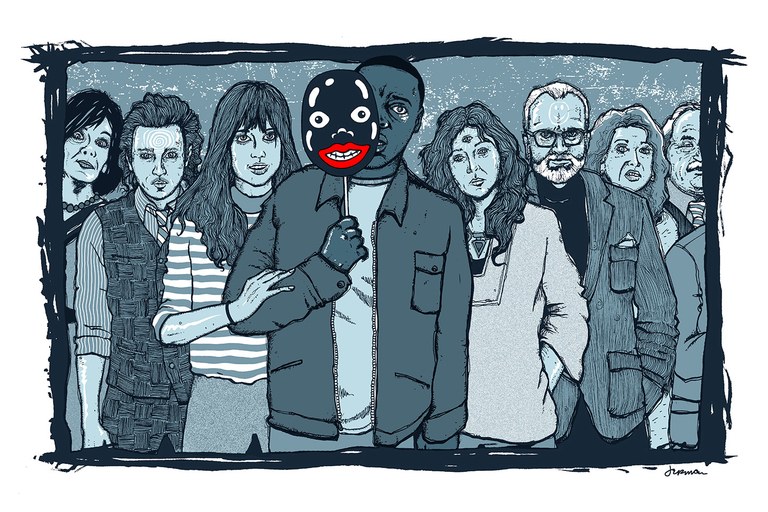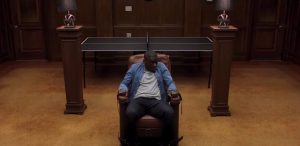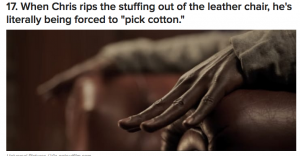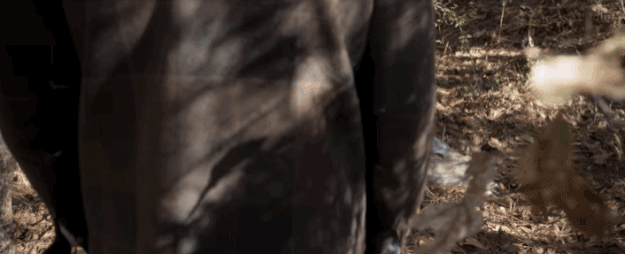“a Slave Auction Described by Russell.” The New England Farmer; a Monthly Journal (1848-1871), vol. 13, no. 7, 1861, pp. 342.
Alexander, M. J. “Not just (any) Body can be a Citizen: The Politics of Law, Sexuality and Postcoloniality in Trinidad and Tobago and the Bahamas.” Feminist Review, no. 48, 1994, pp. 11.
Agostinho, Daniela. “Ghosting and Ghostbusting Feminism.” Graduate Journal for the Study of Culture 6 (2016): 1-16. Print.
Benjamin, Rich. “Get Out and the Death of White Racial Innocence.” The New Yorker. 21 Mar. 2017. 27 May 2017. <http://www.newyorker.com/culture/culture-desk/get-out-and-the-death-of-white-racial-innocence>.
Bernstein, Elizabeth. “Militarized humanitarianism meets carceral feminism: The politics of sex, rights, and freedom in contemporary antitrafficking campaigns.” Signs: Journal of Women in Culture and Society 36, no. 1 (2010): 45-71.
“Chattel Slavery.” Fight Slavery Now! N.p., 14 Dec. 2015. Web. 31 May 2017.
Chew, Huibin Amelia. “What’s Left? After ‘Imperialist Feminist’ Hijackings.” Feminism and War: Confronting US Imperialism. Ed. Robin L. Riley, Chandra Talpade Mohanty, and Minnie Bruce Pratt. New York: Zed, 2008. 75-90.
Complex, Valerie. “Will It Get Better For Black People In the Horror Genre?” Black Girl Nerds. 31 July 2015. Web. 11 Apr. 2015.
Cruz, Lenika. “In Get Out, the Eyes Have It.” The Atlantic. Atlantic Media Company, 03 Mar. 2017. Web. 28 May 2017. <https://www.theatlantic.com/entertainment/archive/2017/03/in-get-out-the-eyes-have-it/518370/>.
Desta, Yohana. “Jordan Peele’s Get Out Almost had an Impossibly Bleak Ending.” Vanity Fair, 03 Marc. 2017. Web. 39 May 2017. <http://www.vanityfair.com/hollywood/2017/03/jordan-peele-get-out-ending>.
Doesticks, Q. K. P. What Became of the Slaves on a Georgia Plantation? Great Auction Sale of Slaves, at Savannah, Georgia, March 2d & 3d, 1859. A Sequel to Mrs. Kemble’s Journal. , 1863.
Ellison, Treva. “The Strangeness of Progress” from Johnson, E. Patrick, ed. No Tea, No Shade: New Writings in Black Queer Studies. Duke University Press, 2016. and “The Disorder of Law and Order” http://www.versobooks.com/blogs/2930-the-disorder-of-law-and-order-free-bresha-meadows (Links to an external site.)
Gutiérrez, Gabriel. “Black Culture Is Cool, So Why Aren’t Black People?” Medium. N.p., 10 June 2015. Web. 28 May 2017. <https://medium.com/hey-guys-lets-talk-about-cool-stuff-swag/black-culture-is-cool-so-why-aren-t-black-people-1929d6e7bcc2>.
Guy-Sheftall, Beverly. 2002. “The Body Politic: Black Female Sexuality and the 19th C. Euro-American Imagination,” in Skin Deep, Spirit Strong: The Black Female Body in American Culture, edited by Kimberly Gisele Wallace-Sanders. Ann Arbor: University of Michigan Press, pp: 14.
Hancock, Ange-Marie. ““We Are Named by Others and We Are Named by Ourselves”.” Intersectionality (2016): 161-91. Print.
Harris, Tamara Winfrey. “All Hail the Queen?” Bitch Media. N.p., 20 May 2013. Web. 28 May 2017. <https://www.bitchmedia.org/article/all-hail-the-queen-beyonce-feminism>.
History.com Staff. “Slavery in America.” History.com. A&E Television Networks, 2009. Web. 31 May 2017.
Hutson, Matthew. “Whites See Blacks as Superhuman.” Slate Magazine, 14 Nov. 2014. Web. 28 May 2017. <http://www.slate.com/articles/health_and_science/science/2014/11/whites_see_black s_as_superhuman_strength_speed_pain_tolerance_and_the_magical.html>.
Jackson, Zakiyyah Iman. “Animal: New Directions in the Theorization of Race and Posthumanism.” Feminist Studies, vol. 39, no. 3, 2013, pp. 669–685. JSTOR, www.jstor.org/stable/23719431.
Lennon, Kathleen, “Feminist Perspectives on the Body”, The Stanford Encyclopedia of Philosophy (Fall 2014 Edition), Edward N. Zalta (ed.), <https://plato.stanford.edu/archives/fall2014/entries/feminist-body/>.
Lewis, Ethan. “The ABCs of Horror Tropes.” Den of Geek. 26 Apr. 2013. Web. 11 Apr. 2016.
Means Coleman, Robin R. Horror Noire: Blacks in American Horror Films from the 1890s to Present. New York: Routledge, 2011. Web. 11 Apr. 2016.
Meyer, Robinson. “The Courage of Bystanders Who Press ‘Record.'” The Atlantic. 08 Apr. 2015. 27 May 2017. <https://www.theatlantic.com/technology/archive/2015/04/the-courage-of-bystanders-who-press-record/389979/>.
Moses, Joy. “‘Get Out’: What Black America Knows About The Sunken Place.” The Huffington Post, 12 Mar. 2017. Web. 28 May 2017. <http://www.huffingtonpost.com/entry/get-out-what-black-america-knows-about-the-sunken_us_58c199f8e4b0c3276fb7824a>.
Preciado, Paul Beatriz “Feminism Beyond Humanity, Ecology beyond the Environment” – http://autonomies.org/it/2015/07/paul-beatriz-preciado-feminism-beyond-humanism-ecology-beyond-the-environment/
Roberts, Dorothy E. “The Politics of Race and Science: Conservative Colorblindness and the Limits of Liberal Critique.” Du Bois Review: Social Science Research on Race 12, no. 01 (2015): 199-211
Sandbeck, Sune. “Towards an Understanding of Carceral Feminism as Neoliberal Biopower.” In Annual Conference of the Canadian Political Science Association, University of Alberta. Retrieved from http://www. cpsa-acsp. ca/papers2012/Sandbeck. pdf. 2012.
da Silva, Denise Ferreira. “No-Bodies.” Griffith Law Review 18.2 (2009): 212-36. Print.
Smith, Ariel. “Indigenous Cinema and the Horrific Reality of Colonial Violence.” Decolonization: Indigeneity, Education & Society. 13 Feb. 2015. Web. 11 Apr. 2016.











